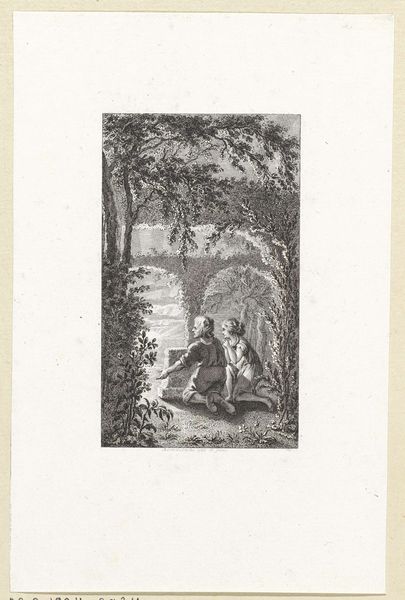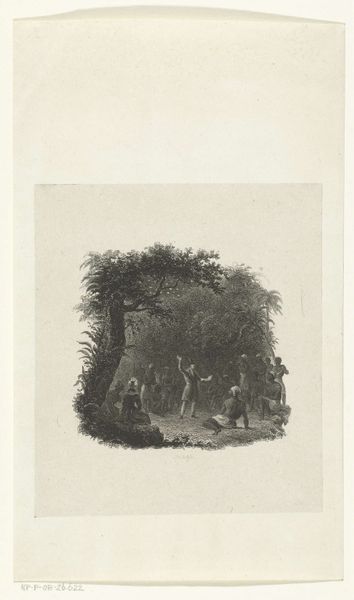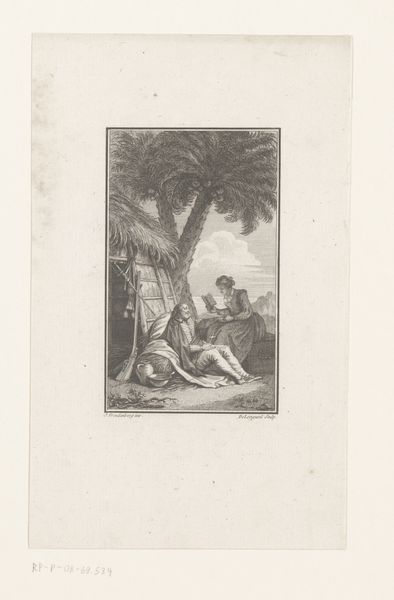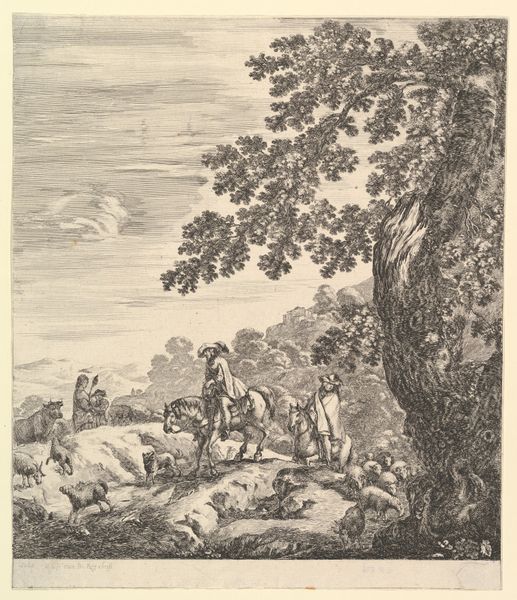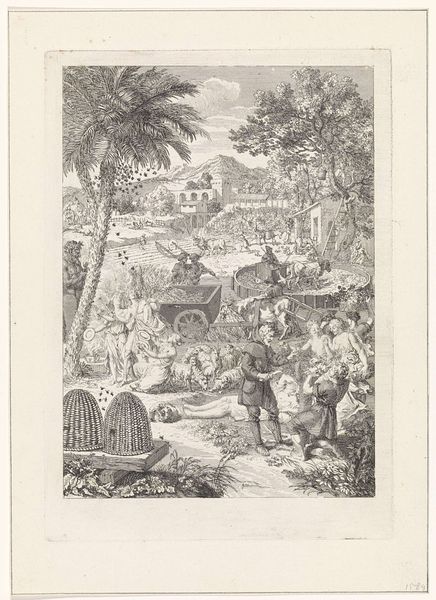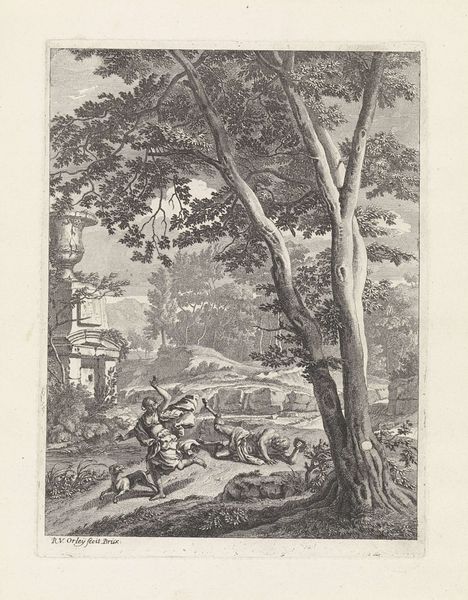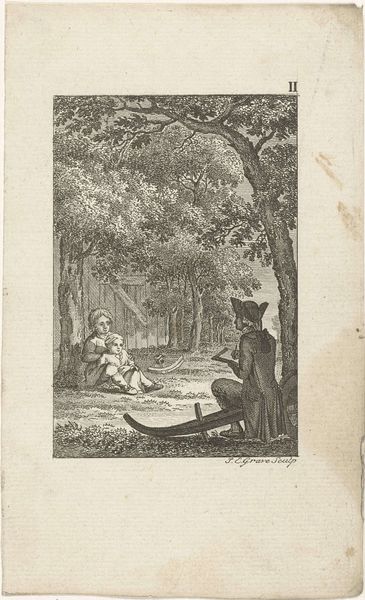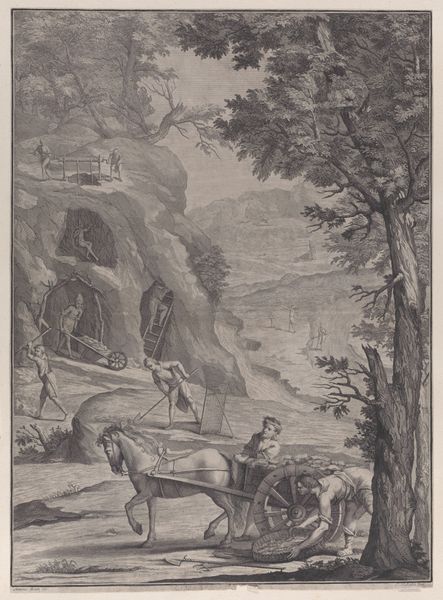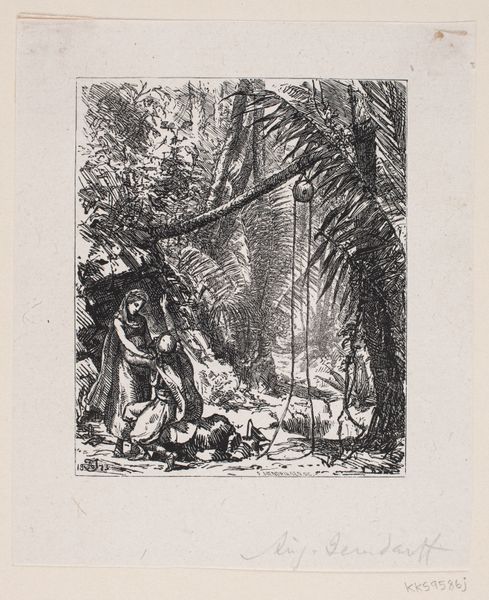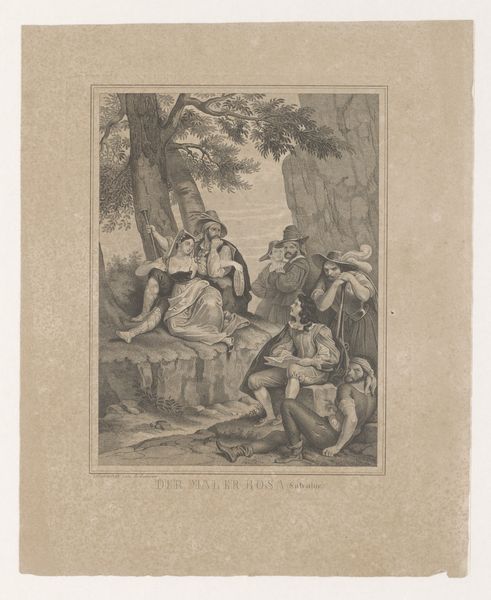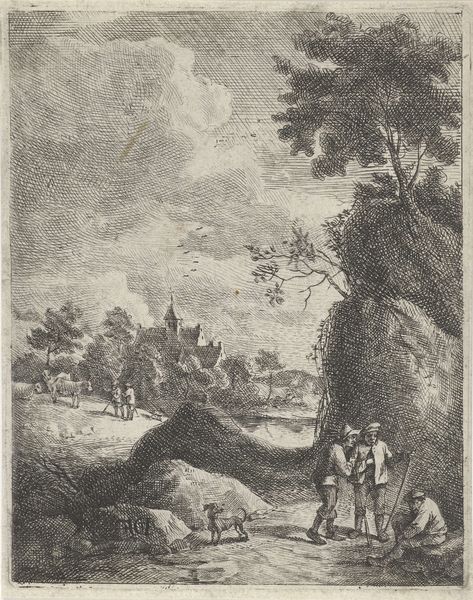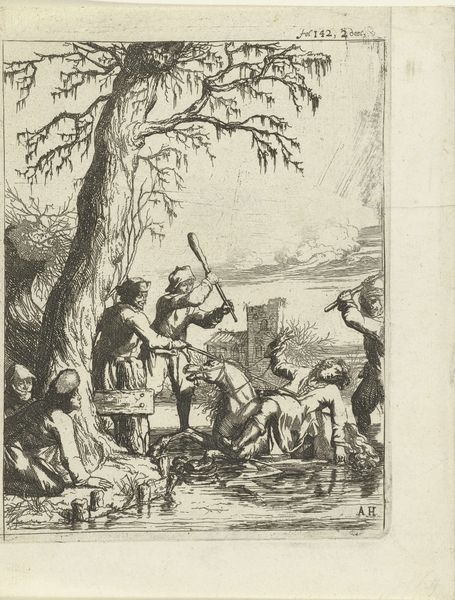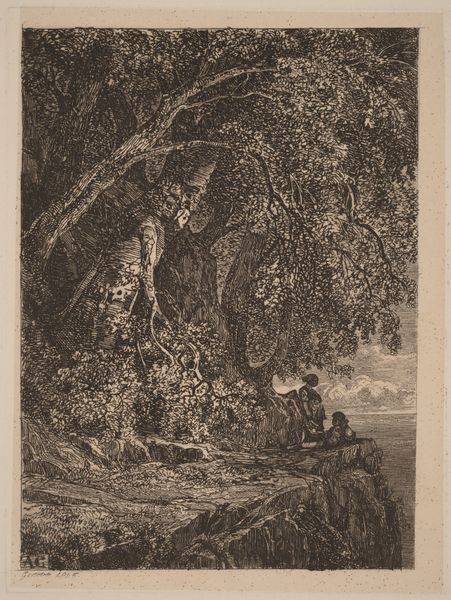
print, engraving
#
baroque
# print
#
old engraving style
#
landscape
#
figuration
#
history-painting
#
engraving
Dimensions: height 248 mm, width 192 mm
Copyright: Rijks Museum: Open Domain
Curator: Welcome. Let’s explore "Dorinda en Silvio", an engraving crafted circa 1695-1705 by Richard van Orley. What strikes you immediately? Editor: Melancholy. A cloaked figure kneels beside a dog; there’s such tenderness in his gesture, contrasted by a somewhat indifferent woman and threatening man with a spear. The composition and contrast evoke deep pathos. Curator: Yes, observe the meticulous lines forming a classical landscape setting—a calculated arrangement of light and shadow. Consider how the texture achieved through engraving evokes depth and dimension. Notice the musculature of the figures and idealized draping. Editor: I find myself wondering who Dorinda and Silvio are. Is this drawing from some well known mythological or historical account and why are the figures gendered and presented in a such way as to communicate traditional patriarchal roles? The male figure appears dominant with his hunting spear. Curator: The scene adheres to Baroque aesthetic principles, emphasizing movement and emotion through precise technical execution. Notice how the varying line weights produce complex gradations that heighten the dramatic tension between foreground and background. The landscape seems to be receding according to aerial perspective, too. Editor: Precisely, yet understanding the broader historical implications contextualizes the work. How does this representation reinforce colonial narratives through an idyllic rendering of nature that is both timeless and everywhere and nowhere? What narratives does the style both reinforce and subvert? Curator: The visual organization draws the eye through specific compositional strategies, like the strategic positioning of trees. One directs us to a background mountain. Such formal devices generate an aesthetic order to which the themes respond, giving it emotional potency. Editor: I wonder what social strata of society were exposed to the work. These prints may have circulated widely, informing and normalizing certain perspectives of social hierarchy, the “natural” world, and the dynamic of colonialism itself. These idyllic, but inherently exclusionary views would then be presented to larger European populations. Curator: Your contextual understanding, of course, is vital. Analyzing the line and texture of engraving allows us to look closer at Van Orley's control of the medium and compositional sophistication. Editor: And understanding his artistry allows us to then reflect on its repercussions through its role in colonial imaginaries. Thanks for pointing to the finer strokes here!
Comments
No comments
Be the first to comment and join the conversation on the ultimate creative platform.
